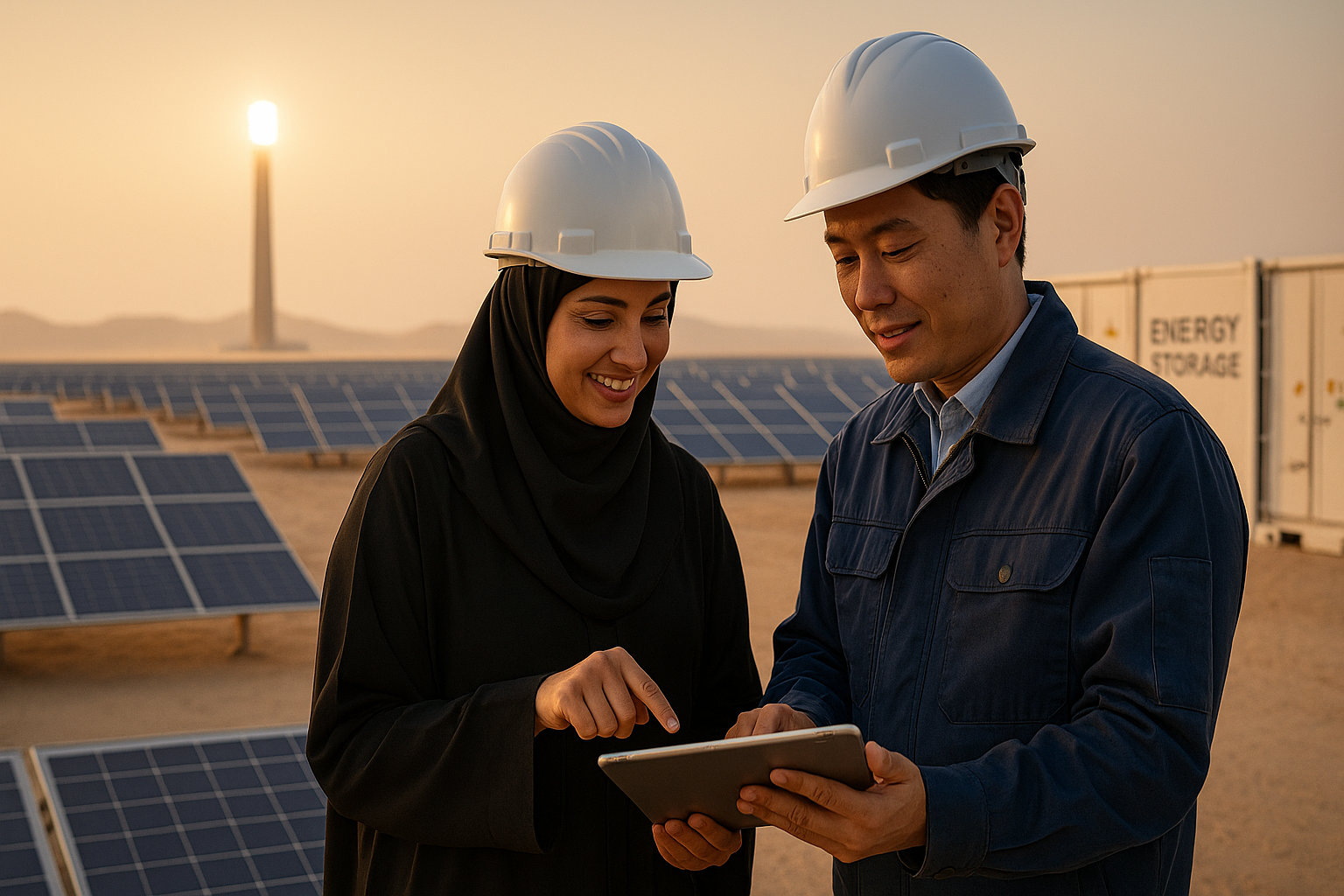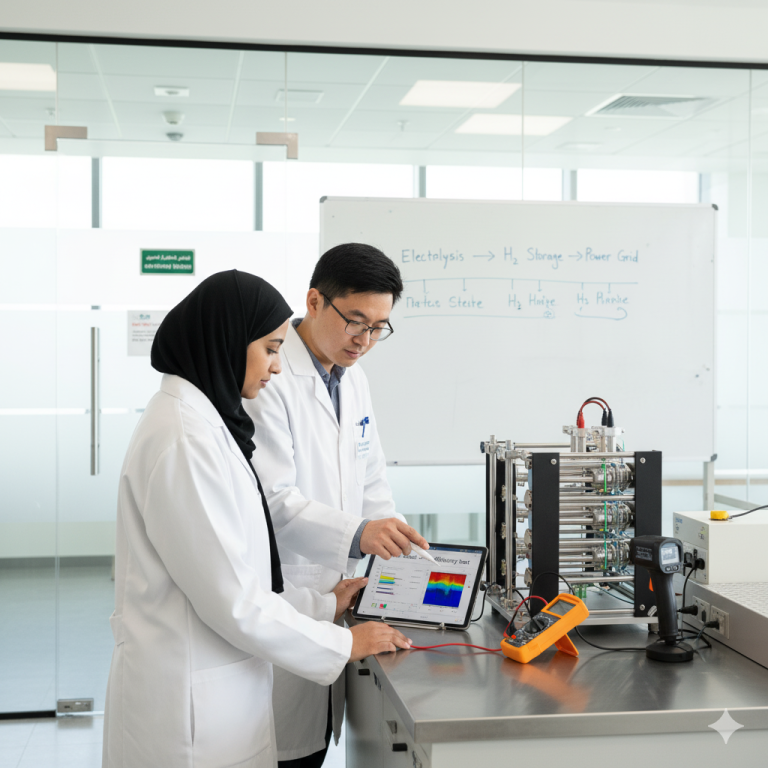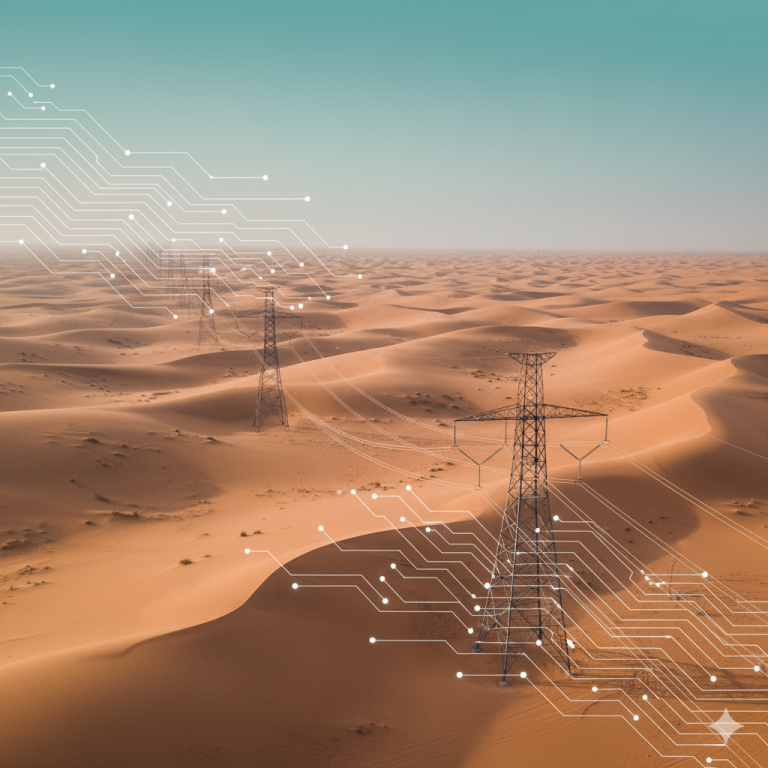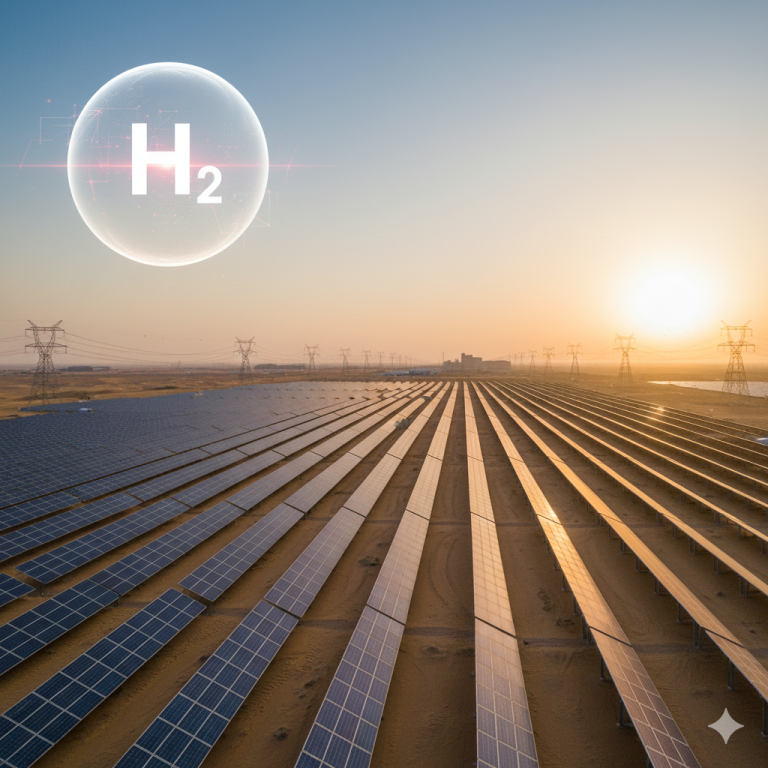The Dealmakers: How Masdar and Chinese Giants Are Shaping the Future
I. Introduction: A New Dawn in Energy Cooperation
In the dynamic landscape of global energy, a powerful alliance is reshaping the future: the burgeoning partnership between the United Arab Emirates (UAE), spearheaded by its clean energy champion Masdar, and the industrial might of China’s energy giants. This collaboration, far from a mere transactional relationship, represents a strategic convergence of ambition, capital, and technological prowess, poised to accelerate the global transition to sustainable energy. As the world grapples with the imperatives of climate change and energy security, the synergy between Masdar and its Chinese counterparts offers a compelling narrative of progress, innovation, and mutual benefit. This article delves into the industrial perspective, historical underpinnings, and future trajectory of this pivotal cooperation, highlighting how these dealmakers are not just building power plants, but forging a new paradigm for international energy collaboration.
II. Historical Foundations: From Oil to Renewables
The relationship between China and the UAE has evolved significantly since the establishment of diplomatic ties in 1984. Initially rooted in traditional oil and gas trade, a cornerstone of China’s energy security and the UAE’s economic prosperity, this partnership has steadily diversified. The UAE, a pivotal member of OPEC, has long been a reliable supplier of hydrocarbons to China, fueling its rapid industrialization and economic growth. This foundational trade relationship fostered deep economic and political ties, culminating in the establishment of a strategic partnership in 2012, making the UAE the first Gulf state to achieve this distinction with China.
However, as global energy paradigms shifted, so too did the focus of this bilateral relationship. Both nations recognized the imperative of transitioning towards a more sustainable energy future. The UAE, with its ambitious Vision 2030 and Net Zero by 2050 strategic initiative, began to aggressively invest in renewable energy, positioning itself as a global leader in clean technology. China, simultaneously, emerged as a manufacturing powerhouse for renewable energy components and a leader in large-scale project development. This convergence of strategic interests laid the groundwork for a new era of cooperation, moving beyond the traditional buyer-seller dynamic to one of joint development and innovation in the clean energy sector. The Belt and Road Initiative (BRI), launched by China, further solidified this shift, with the UAE becoming a crucial hub and partner, particularly in green energy projects.
III. Masdar: The UAE’s Vanguard in Clean Energy
Masdar, the Abu Dhabi Future Energy Company, stands as the UAE’s strategic vehicle for advancing its clean energy agenda. Established in 2006, Masdar has rapidly grown into one of the world’s leading renewable energy companies, with a global footprint spanning over 40 countries. Its mandate extends beyond mere project development; Masdar is a holistic entity involved in utility-scale power plants, community grid projects, energy storage, and clean technology solutions. The company’s ambitious targets—to achieve 100GW of renewable energy capacity by 2030 and become a leading producer of green hydrogen by the same year, targeting 1 million tonnes per annum—underscore its pivotal role in the UAE’s energy transition.
Masdar’s success is built on a foundation of strategic partnerships, technological adoption, and a forward-looking investment philosophy. It actively seeks collaborations with global energy companies, bringing together diverse expertise and capital to deliver commercially viable renewable energy projects. This proactive approach has seen Masdar engage in significant ventures across the Middle East, Central Asia, Southeast Asia, and Africa, many of which are integral to the broader BRI framework. By leveraging its financial strength and strategic vision, Masdar has become a key enabler of the UAE’s sustainability goals, demonstrating a commitment to not only domestic energy diversification but also to contributing to global climate action.
IV. Chinese Giants: Powering the Green Silk Road
The involvement of Chinese energy giants in the UAE’s clean energy transformation is multifaceted, encompassing investment, technology provision, and engineering, procurement, and construction (EPC) services. These companies, often state-owned enterprises (SOEs), bring unparalleled scale, efficiency, and cost-effectiveness to renewable energy development, making them indispensable partners for the UAE’s ambitious projects. Their participation is a testament to China’s global leadership in renewable energy manufacturing and project execution.
One of the most significant collaborations is the strategic partnership between Masdar and the Silk Road Fund (SRF). In November 2024, Masdar and SRF signed a Memorandum of Understanding (MoU) to explore co-investment opportunities in renewable energy projects, primarily within BRI countries. The SRF has committed to investing up to RMB 20 billion (approximately USD 2.8 billion) alongside Masdar. This financial commitment underscores China’s confidence in Masdar’s capabilities and its strategic interest in expanding its green energy footprint globally through trusted partners. This collaboration is explicitly aimed at building a
“Green Silk Road,” aligning with both nations’ sustainability goals and the broader objectives of the Belt and Road Initiative.
Beyond financial partnerships, Chinese companies are deeply embedded in the execution of major renewable energy projects. Shanghai Electric, a global leader in power generation equipment and EPC services, has forged significant alliances. A prime example is its collaboration with Masdar on the 2GW Sadawi photovoltaic project in Saudi Arabia. This project, representing Shanghai Electric’s largest solar EPC undertaking globally, showcases the company’s ability to deliver large-scale, complex renewable energy infrastructure. The partnership with Masdar in such ventures demonstrates a mutual trust and a shared vision for accelerating renewable energy deployment across the region.
Furthermore, Chinese manufacturers are critical suppliers of key components for Masdar’s projects. Companies like Jinko Solar, a leading global solar panel manufacturer, provide the photovoltaic modules that form the backbone of many solar farms. Contemporary Amperex Technology Co., Ltd. (CATL), the world’s largest EV battery manufacturer, supplies advanced battery energy storage systems (BESS), crucial for ensuring grid stability and dispatchability of renewable energy. The integration of Chinese technology, known for its efficiency and cost-effectiveness, into these large-scale projects highlights the symbiotic relationship: the UAE gains access to cutting-edge, affordable solutions, while Chinese companies expand their global market reach and demonstrate their technological leadership.
Other notable collaborations include China Three Gorges Corporation’s acquisition of Alcazar Energy Partners, a developer of renewable energy projects in the Middle East, further solidifying China’s investment in the region’s green energy sector. These diverse engagements illustrate a comprehensive approach where Chinese entities contribute across the entire value chain of renewable energy development, from financing and project development to equipment supply and construction.
The mutual benefits of this industrial cooperation are profound. The UAE, through Masdar, gains access to the necessary capital, technology, and execution capabilities to rapidly scale its renewable energy capacity and achieve its ambitious climate targets. China, in turn, secures strategic partnerships, expands its global footprint in the burgeoning clean energy market, and reinforces its position as a leader in green technology and infrastructure development. This collaborative model serves as a powerful engine for both nations’ economic diversification and sustainable growth.
V. Case Studies: Landmark Projects and Their Impact
The tangible results of this China-UAE energy cooperation are evident in a series of landmark projects that are transforming the energy landscape of the region and beyond. These projects serve as powerful examples of how strategic partnerships between Masdar and Chinese giants are translating ambitious visions into operational realities.
One of the most prominent examples is the Mohammed bin Rashid Al Maktoum Solar Park (MBR Solar Park) in Dubai, one of the world’s largest single-site solar parks. While a DEWA (Dubai Electricity and Water Authority) initiative, Chinese companies have played a significant role in its development, particularly in providing solar PV technology and EPC services. This mega-project, with planned capacity reaching 5,000 MW by 2030, showcases the scale and ambition of renewable energy development in the UAE, heavily supported by Chinese industrial capabilities.
Another critical project demonstrating this synergy is the Al Dhafra Solar PV Project in Abu Dhabi. Masdar, in partnership with other international entities, is developing this 2 GW solar photovoltaic independent power producer (IPP) project. Chinese companies are integral to its supply chain, providing high-efficiency solar panels and other critical components. Upon completion, Al Dhafra will be one of the world’s largest single-site solar power plants, significantly contributing to the UAE’s clean energy targets and reducing its carbon footprint.
The aforementioned 2GW Sadawi photovoltaic project in Saudi Arabia, a collaboration between Masdar and Shanghai Electric, further exemplifies the regional impact of this partnership. While located in Saudi Arabia, it highlights the broader regional influence of the Masdar-China alliance, demonstrating their capacity to export their successful cooperation model to neighboring countries. Shanghai Electric’s role as the EPC contractor for such a massive project underscores its technical expertise and Masdar’s trust in Chinese execution capabilities.
The involvement of Chinese suppliers like Jinko Solar and CATL in these and other Masdar projects is crucial. Jinko Solar’s high-performance PV modules are deployed across numerous solar farms, ensuring optimal energy generation. CATL’s advanced battery energy storage systems are vital for integrating intermittent renewable energy sources into the grid, providing stability and reliability. These technological contributions from China are not just about supplying hardware; they represent the transfer of cutting-edge innovation and manufacturing excellence that is essential for the rapid deployment of renewable energy infrastructure.
These case studies collectively illustrate the profound impact of the Masdar-China partnership. They demonstrate a successful model of international cooperation where capital, technology, and expertise are effectively mobilized to achieve large-scale renewable energy development. The projects contribute significantly to the UAE’s energy diversification, reduce its reliance on fossil fuels, and position it as a leader in the global energy transition. For China, these projects serve as showcases for its advanced renewable energy technologies and engineering prowess, strengthening its economic ties and strategic influence in the Middle East and beyond. The collaboration is a win-win, driving sustainable development and fostering a more interconnected global energy future.
VI. The Future Landscape: Innovation, Green Hydrogen, and Beyond
The China-UAE energy cooperation is not static; it is an evolving partnership that is increasingly looking towards the next frontier of energy innovation. While significant strides have been made in solar and wind power, the future landscape promises deeper collaboration in emerging technologies, particularly green hydrogen, advanced energy storage, and smart grids.
The UAE, with its abundant solar resources and strategic geographical location, is positioning itself as a global leader in green hydrogen production. Masdar is at the forefront of this ambition, aiming to become a leading producer by 2030. China, with its vast manufacturing capabilities and growing expertise in electrolysis and hydrogen infrastructure, is a natural partner in this endeavor. Joint ventures in green hydrogen production, storage, and export facilities are likely to become a major focus, leveraging Chinese technology to scale up production and reduce costs.
Advanced energy storage solutions, beyond traditional batteries, will also be a key area of collaboration. As renewable energy penetration increases, the need for sophisticated grid management and long-duration storage becomes paramount. Chinese companies are investing heavily in these areas, and their innovations will be crucial for the UAE to maintain grid stability and optimize its renewable energy assets. Similarly, the development of smart grids, incorporating AI and IoT for efficient energy distribution and consumption, presents another avenue for joint technological development and deployment.
The strategic importance of the UAE as a hub for green energy export and innovation cannot be overstated. Its geographical position allows it to serve as a bridge between East and West, and its commitment to sustainability makes it an attractive destination for green investments. China’s continued partnership will be instrumental in supporting the UAE’s net-zero ambitions, providing the technological backbone and investment capital required to achieve these goals. This collaboration extends beyond energy security to encompass a shared vision for a sustainable global economy.
While opportunities abound, potential challenges include navigating geopolitical shifts, ensuring intellectual property protection, and adapting to rapidly changing technological landscapes. However, the strong historical ties and mutual economic interests between China and the UAE suggest a resilient partnership capable of overcoming these hurdles, paving the way for continued, impactful collaboration in the global energy transition.
VII. Conclusion: A Model for Global Energy Transition
The collaboration between Masdar and Chinese energy giants stands as a compelling testament to the power of international partnership in addressing the world’s most pressing energy challenges. From the historical foundations of oil trade to the cutting-edge frontiers of green hydrogen, this alliance has evolved into a sophisticated model for accelerating the global energy transition. The dealmakers, through strategic investments, technological exchange, and large-scale project execution, are not merely shaping the future of China-UAE energy cooperation; they are demonstrating a viable pathway for global energy security, sustainability, and economic development. Their positive and proactive engagement offers a beacon of hope, illustrating how diverse nations can unite to build a greener, more prosperous future for all.







